
Corinthian Midwinters Could Be Called Midsummers
One of the great things about droughts is awesome weather. This past weekend’s Corinthian Yacht Club Midwinters was a reminder that signing up for midwinter racing will add that extra level of commitment for you and your crew to get the boat out sailing in the winter — one of the best times to sail San Francisco Bay. Those who did sign up and sail were amply rewarded. The forecast was for sun and light air on Saturday and a little less sun and potentially small craft warnings for late afternoon on Sunday. Small craft warnings might keep some folks in their slip. Since we were signed up to race, we went anyway. Lucky for us and the rest of the fleet.
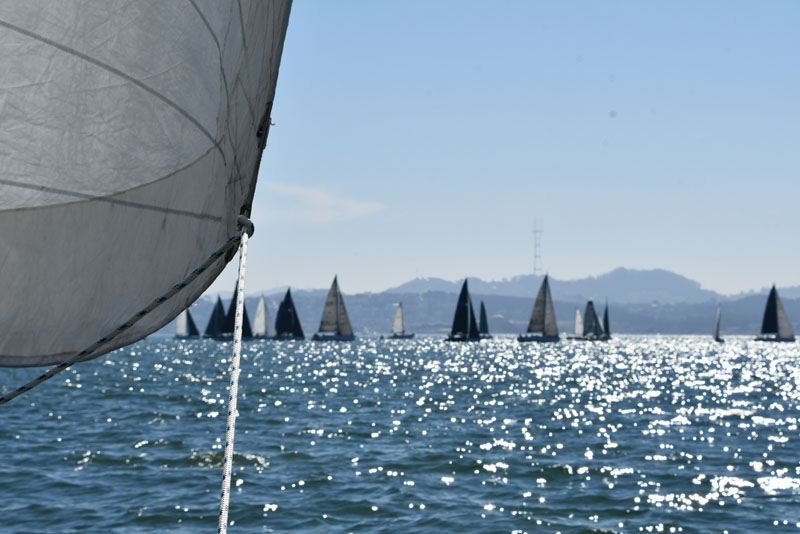
A fleet of 82 boats signed up, spread across 10 classes for the two-weekend race series with regattas held on Martin Luther King Jr. Day weekend and Presidents Day weekend. Both weekends turned out sunny and pleasant, with a tsunami warning from the Tongan volcano marking the opening Saturday in January. Despite the warning, boats showed up, and racers enjoyed enough breeze to overcome the tsunami-induced current swirls. It set the tone for the series.
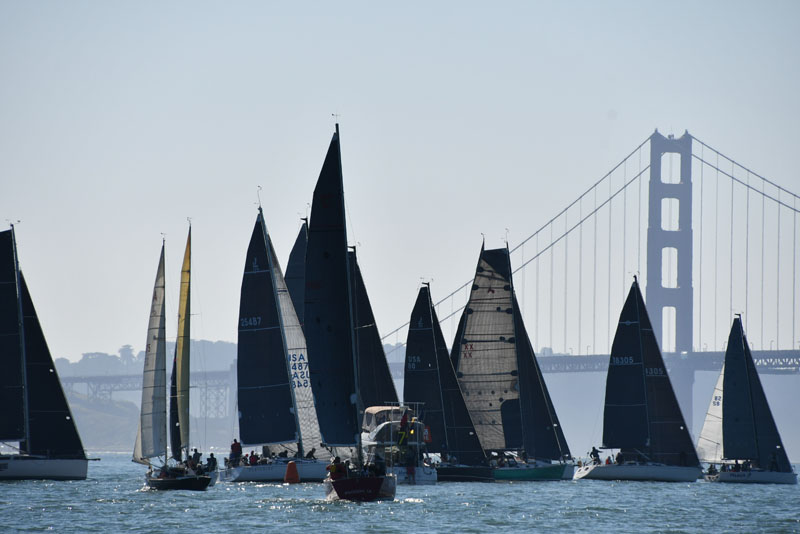
There are too many winners to name here, but they ranged in size from Richard vonEhrenkrook’s Can O’Whoopass, winning the Cal 20 division, to Greg Dorn’s Dehler 46 Favonius in Class A.
One unique feature of the Corinthian Midwinters is the Aotea Trophy. An idea conceived by our late race editor, Rob Moore, and named after Peter Hogg’s trimaran Aotea, the trophy rewards the yacht club that achieves the best combined score from a three-boat team in three different classes. San Francisco Yacht Club managed the feat again, with a perfect score of three first-in-class finishes from Richard vonEhrenkrook, Hank Easom’s Serenade in Class 4, and Glenn Isaacson’s Q in Non-Spinnaker 1. While all three achieved three firsts in four races, they had one lower score to let everyone know they were not unbeatable. It’s just very difficult.
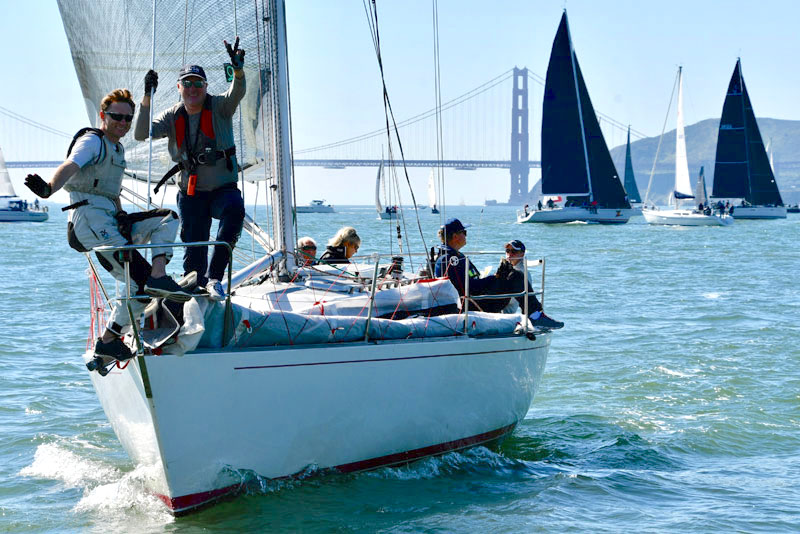
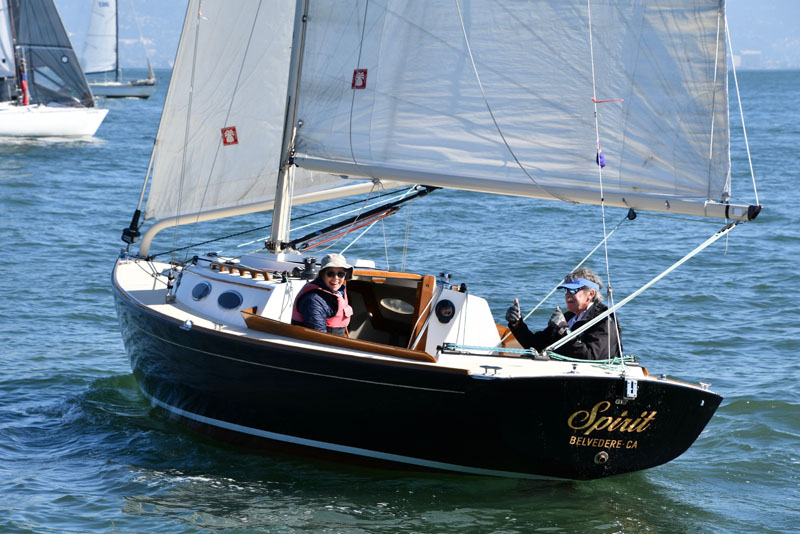
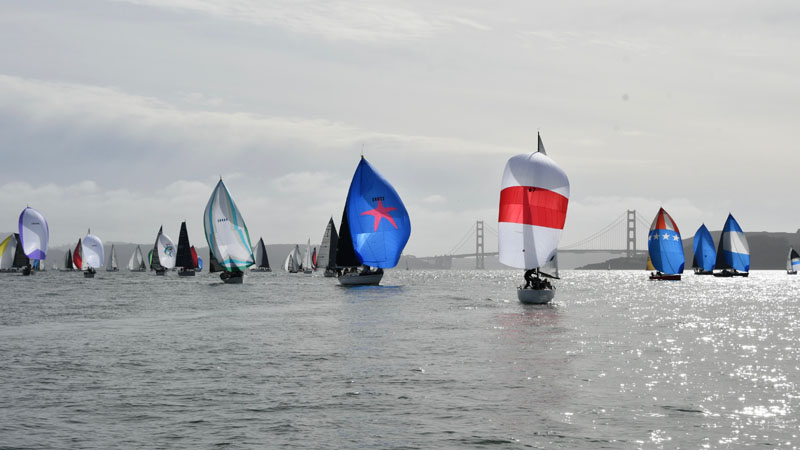
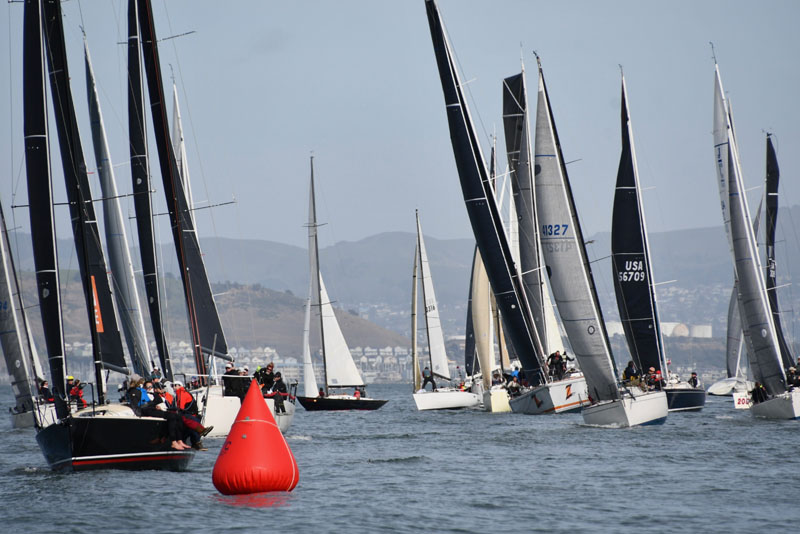
There were 52 boats out racing on Sunday, with a few different pursuit course options arranged to accommodate a variety of weather conditions. The race committee chose well and sent racers across a couple of courses that included marks such as Yellow Bluff, Blackaller, Point Blunt and others, all meeting up at the infamous Elephant Rock turning mark to head for the finish off the CYC race deck.
The small craft warnings due later in the day caused us to question whether to use the big or small sail. The wind hovered around 12-15 knots at the start. Would it build from there? Big sails was the call. The wind never increased during the light-air reach across the Bay, and we all faced a light-air run down Raccoon Strait as the ebb current began to build.
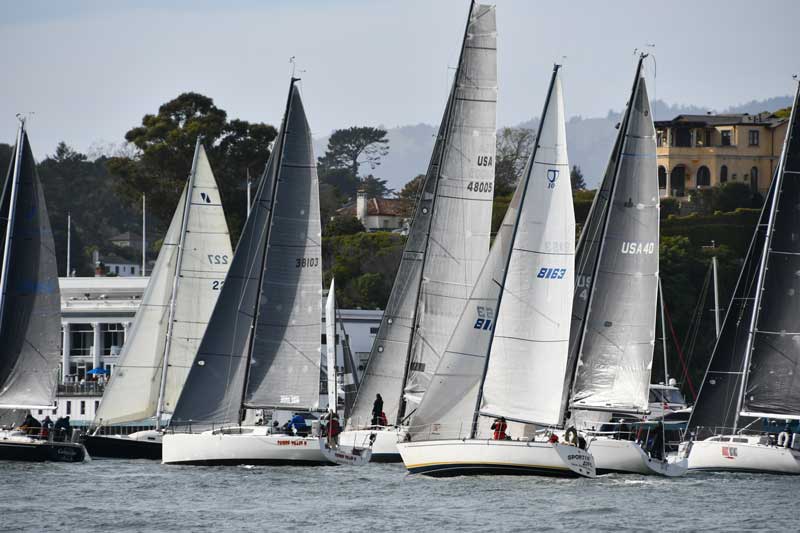
One of the best parts was the easing of pandemic protocols, which allowed the club to offer more sociable post-race festivities. Most racers were ready. The Saturday DJ livened up the evening taco bar and awards ceremony. The weather allowed for more open-air, open-door dining, so post-racing life felt close to normal. The Sunday awards ceremony was very well attended, with big rounds of applause for Michael Moradzadeh, the race committee, and the many smiling competitors who stepped up to receive trophies.
There’s lots more sailing ahead, with hope for continued good racing on the water during Mark Twain’s upcoming “coldest winter I ever spent was a summer in San Francisco” and reconnecting afterward on land. There are many more stories from four beautiful days of racing, though they all get boiled down from subjective tales to precise metrics in the final standings. See the results here.
Max Ebb: Never Cheat on the Small Stuff
Max Ebb was schooled on the small stuff when his committee-mates took a different approach to arbitration.
“How did I end up chairing a protest committee?” I asked myself.
I can stay out of trouble on the racecourse, but I’m far from an expert. Maybe my club’s race chair thought that my age and demeanor would give the appearance of wisdom and integrity — but it would only be appearance.
Fortunately, I had some expert help on the committee: Lee Helm was sitting on my left, with her encyclopedic knowledge of everything on the geeky side of sailing, including rules. On my right was a former college team racer and sailing instructor, maybe a little rusty since his college days, but team racers know the rules like no one else. I can run a meeting according to the prescribed procedures, but my committee-mates would do the heavy lifting.
First up was a case involving a windward-leeward proper course dispute.
“It’s a simple application of Rule 17,” noted the old college sailor.
“Which rule is that?” I asked, not being conversant with rule numbers.
“Proper course when overlapped,” Lee informed me.
I flipped my rulebook open to Rule 17, but it referenced Rule 13 without giving that rule’s title, so I also had to look up Rule 13 just to establish that it probably had no bearing on this case.
“Do you know all the rules by numbers by heart?” I asked the former college racer.
“I used to teach my racing students to remember the rule names and numbers first, before they tried to memorize the contents,” he explained.
“I do that for Part 2, the right-of-way rules,” added Lee. “That’s where all the complexity is. It’s like, knowing the numbers and subdivisions sets up the structure for the content and makes space in your brain for what they all mean.”
“Like dimensioning a variable in computer code,” added the former team racer. “Back in the day, you couldn’t use a variable in a program until you gave it a name and a data type.”
“Really?” said Lee. “You had to dimension variables before using them in your code? Must have been a pain …”
I was dubious of the value of this method, but the racing instructor demonstrated his grasp of Part 2 by writing down the rule titles from memory.
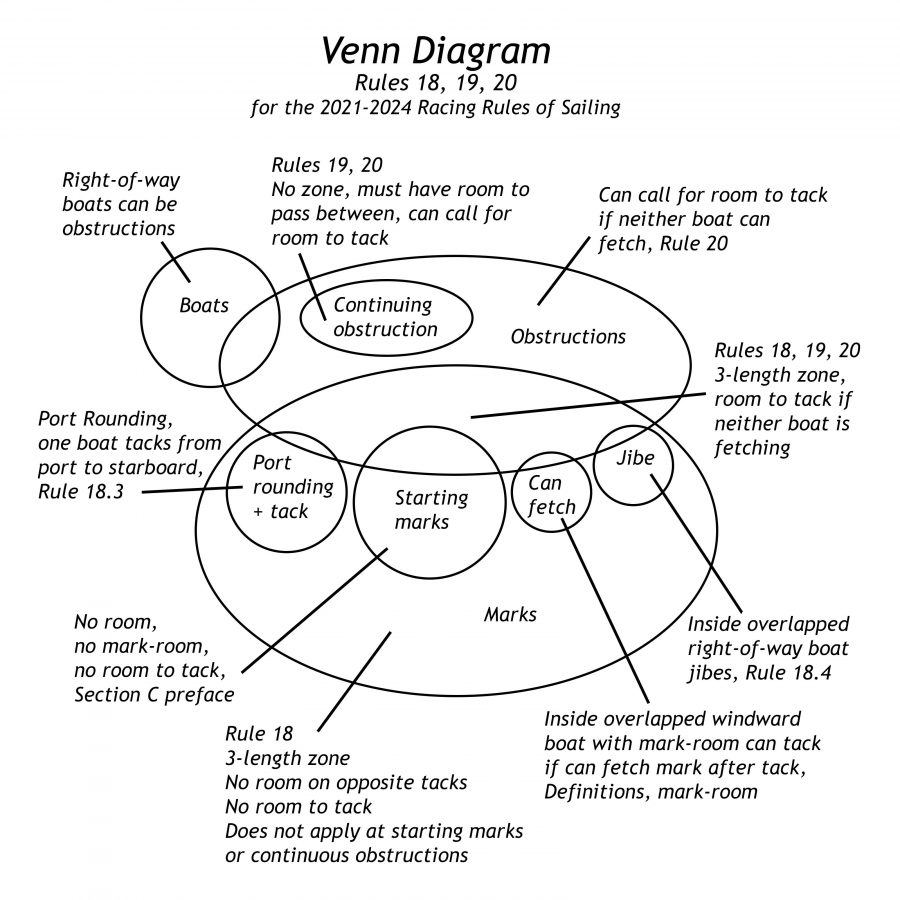
Read the full story and discover some interesting angles on racing rules in Latitude 38‘s February issue.
San Francisco on the Bay: “Trail Guide”
What the Port Townsend Shipwrights’ Regatta Is Really All About
Port Townsend might not be ‘just up the road’, but The Resourceful Sailor‘s description of next weekend’s Shipwrights’ Regatta makes us want to hoist our sails and hotfoot it up there for the Saturday event.
What’s that buzz going on around the Port Townsend Boatyard this month? Something about putting the shipwright back in the Shipwrights’ Regatta? Well, it’s not just gossip. The 31st Annual Shipwrights’ Regatta, brought to you by the Port Townsend Sailing Association, in conjunction with the Northwest Maritime Center and local sponsors, is scheduled for noon, February 26, 2022, on Port Townsend Bay. It’s a regatta, but in a loose sense of the word. There’s a start line and a finish line, but no handicaps and no taking oneself too seriously. It’s really about bringing the sailing and maritime community together with a hardy, cold-weather sailing course.
For me, as a recent arrival to Port Townsend, the origin of the Shipwrights’ Regatta is clouded in mystique. I hear tell it was a small clique of local shipwrights getting a hoot out of wintertime sailing and partying. I can neither confirm nor deny. Since then, it has had a few stewards and expanded through the years, with the shroud of ambiguity over its beginnings and history only adding to the intrigue.
While the true history may reveal itself over time, what’s important is the event that’s in front of us. Hope for good weather, a good boater turnout, an after-party, and to avoid winning some of the classic trophies passed on from year to year. For example, the Directional Helmet, given to a boat having trouble navigating the course. Or, the Hook, awarded to the last boat to cross the finish line. Sure, there are more flattering prizes too. Like your name immortalized on the Perpetual Trophy for being the overall winner. Or the Golden Trident for the saltiest boat or crew. There are door (or is it gangway?) prizes and even free haulouts to be awarded.
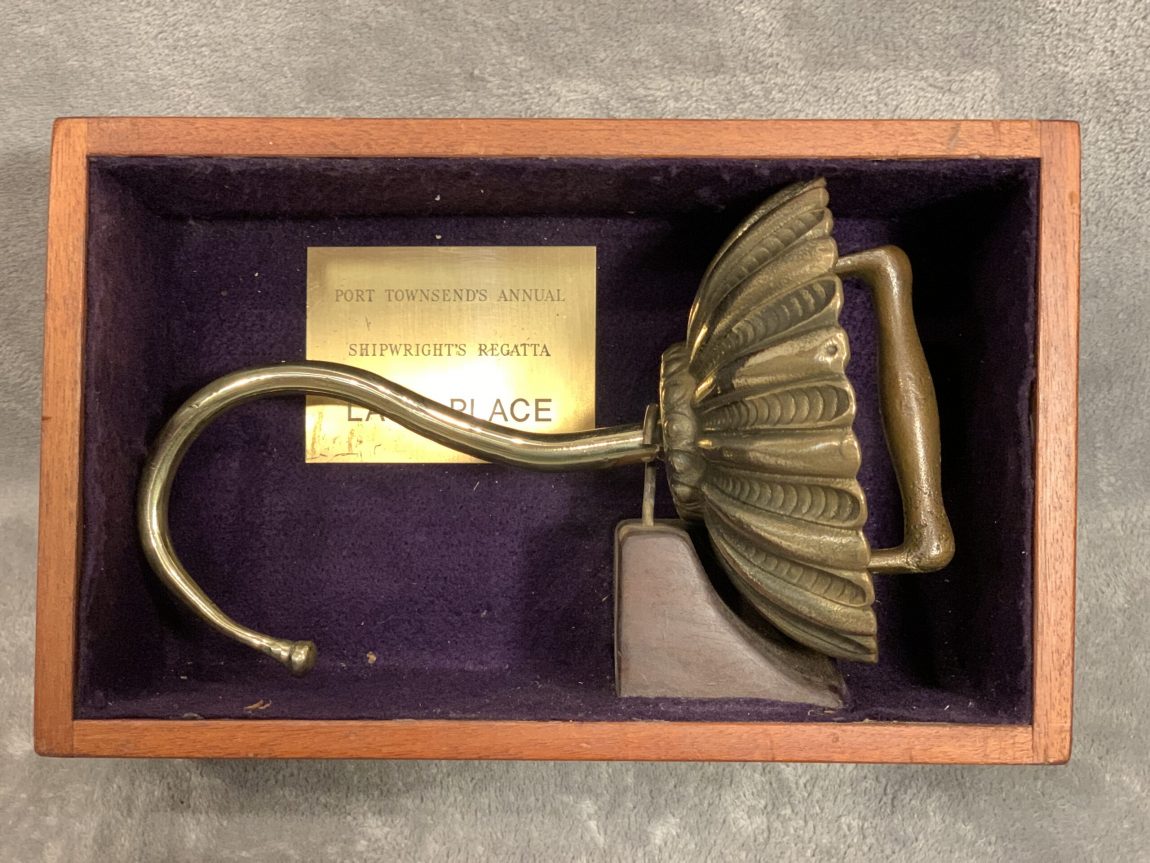
It’s a classic event steeped in the tradition and culture of the Port Townsend maritime community. With the help of local sponsors, the event is free, and all sailboats are welcome, regardless of class or size. If you haven’t your own, harangue your friends and neighbors to take theirs out, but don’t forget the snacks, beverages, and good cheer. If you are more of the powerboat type, that’s OK. Bring it out and join the crews of spectators floating on the fringe of the course, adding to the festivities. I hear they like snacks and beverages too. Maybe you love the beauty of boats, but being on one makes you queasy. With a good turnout (the 2021 Regatta had over 50 participants), shoreside viewing of the Port Townsend Bay spectacle from Water Street, Sims Way, or Uptown is an option.
Last (but not least) is the pizza, beer, and awards after-party for participants at the Northwest Maritime Center, also made possible by local sponsors. Keep your foulies and long underwear on because it’s likely to be outside (stupid COVID).
If your interest is piqued, learn more about the 31st Annual Shipwrights’ Regatta by clicking on over to the Port Townsend Sailing Association website. You can register, get sailing instructions, check out the awards, and review the lore around the event. Winning is not important, but showing up is. Come see what the hubbub is all about.
The End of the Anchor-Out Era on Richardson Bay
When we started reporting on the latest developments on Richardson Bay in August 2021, we were compelled to compare the Bay Area’s protracted conflict over anchor-outs to the then-ending war in Afghanistan: A decades-long intervention into a historically ungovernable region was coming to a conclusion, and in some ways, we seemed to end exactly where we’d started. This is certainly not what authorities tasked with clearing out Richardson Bay had envisioned. They told us that they’d sought to be compassionate, humane and fair, to help long-time liveaboards maintain their dignity, and to specifically prevent the indiscriminate clearing out of people and boats that characterized Sausalito’s Houseboat Wars in the 1970s and ’80s.
While there seem to be some similarities between Richardson Bay’s recent past and the present conflict, there have also been major changes. Plans are now on the books to remove all long-term anchor-outs by 2026, and there has been a sharp reduction in the number of boats on the water, following a glut in the mid-2010s that likely sparked an eventual crackdown. There are also plans for a 15- to 20-boat mooring field where transitioning anchor-outs will be placed, though even this proposal has become contentious among local governments.
As regulations have tightened, several lawsuits have pushed back against authorities. A homeless encampment — which has become a focal point of controversy — has taken root in Sausalito in the shadow of the facility where boats are crushed. Ramped-up enforcement on anchor-outs has, in some cases, led to confrontations, and former boat owners from Richardson Bay to the Oakland Estuary have sued over the confiscation and destruction of their vessels. Despite years of exhaustive debate, some people still question who, if anyone, has jurisdiction in the murky nexus of maritime borders that anchor-outs occupy. Long-term anchoring was never legal, but was tolerated for more than 30 years, and there was some kind of acceptance of full-time liveaboards, though tensions festered. When the long-standing 72-hour anchoring limit was finally enforced in full around 2018, it created an atmosphere where people declared, “You have no right to tell me to leave,” and the battle began anew.
Journalists have been drawn to the fray, and Sausalito’s anchor-out debate has appeared in both local and international media. “Sausalito’s housing war is happening on the water … [and] in this ongoing war, any tactics were worth trying,” the San Francisco Chronicle wrote about physical confrontations over confiscated boats. As in the past, some people frame the anchor-out debate as a struggle between rich and poor, between wealth hoarders and have-nots, between those who live for “free” and those in neighboring multi-million-dollar homes. Others shun these characterizations, saying it’s simply a matter of following long-standing, common-sense laws, similar to the ethos of protecting parks and public spaces. (Anchor-outs have been a concern throughout the nation, especially in Florida, but “long-term, derelict anchor-outs get wiped off the map through an act of God,” a sailor told us, referring to the frequency of hurricanes.)
“To make our position clear: We think there’s room on Richardson Bay for everyone — if everyone were willing to compromise,” wrote Latitude 38 founder Richard Spindler in 2001. While the ideas of compromise and space for all now seem naive, Latitude remains hopeful that there can be peace, even though the same intractable, warring dynamic that has long framed the anchor-out debate seems to remain — at least for now.
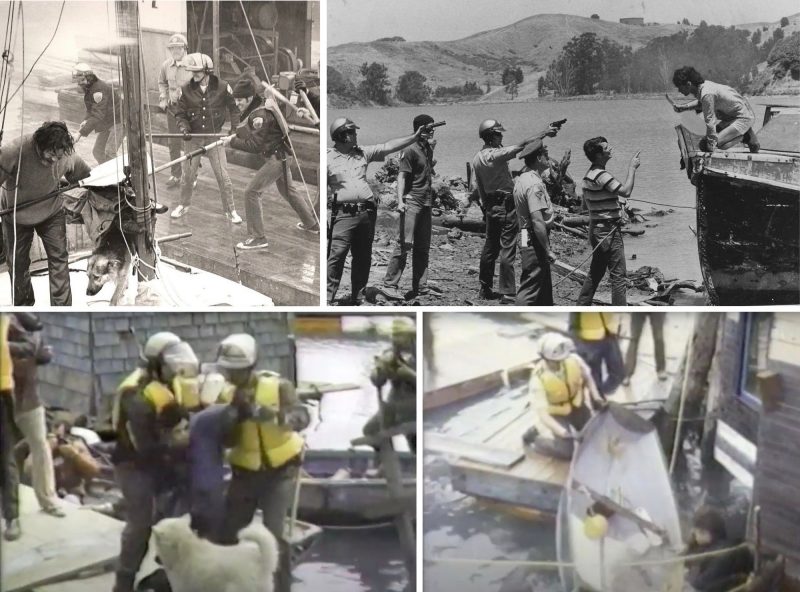
In 2019, the California State Auditor said that the Bay Conservation and Development Commission had neglected its responsibility to protect San Francisco Bay, and cited vessels anchored on Richardson Bay as a specific example. Despite vigorous protests from the annals of Latitude (and from Latitude itself), the BCDC has set policy on anchor-outs since the 1980s. “Our perception is that many boat owners look to the BCDC in the same way Afghanis look to the occupying Soviets: an unwanted outside agency coming in under false pretenses and telling them how to live,” Spindler wrote in 1985.
Following the audit, the BCDC threatened to sue the Richardson Bay Regional Agency for not enforcing its own 72-hour anchoring limit, and in late summer 2021, the two agencies reached an agreement, which began by reiterating a policy established in 1984: “Vessels and floating structures used for residential purposes (i.e., houseboats and liveaboards) should be allowed only in recreational or houseboat marina berths.
“All anchor-outs should be removed from Richardson Bay.”
Former Sausalito mayor Jill Hoffman told us that the city was “well ahead” of the State Auditor and BCDC’s focus on anchor-outs. Since 2016, the city — which withdrew from the RBRA in 2017 — went from 90 anchored vessels to just six. The RBRA said that the number of boats in their waters went from just under 100 in the 1970s to over 240 boats by 2016. There were 133 boats in October 2020; in October 2021, the RBRA told us that there were 82 boats, of which 10 were operable.
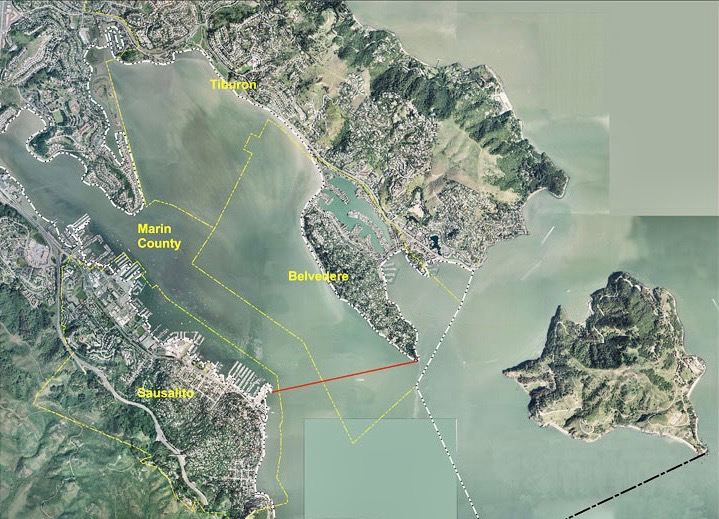
There is a tendency to lump anchor-outs, and some abstract idea of the their vessels, into the same category. Some describe all anchor-outs as mariners and bohemians, others describe all anchor-outs as homeless. There’s no question that the Bay Area’s housing crisis, and the national rise in homelessness, were the match that ignited the Richardson Bay powder barrel. Affordable housing and other social-policy issues are well outside the scope of this magazine — these issues are even outside the scope of the agencies directly tasked to deal with anchor-outs, such as the RBRA and BCDC, as well as businesses and individuals who have become involved by default, such as marinas and harbormasters.
Robbie Powelson, the president of the Marin County Homeless Union, told us that because of Marin’s exclusivity and lack of new, affordable housing, “Many people started to get boats on the anchorage, and you had people on Richardson Bay who didn’t want to be there in the first place.” Curtis Havel, the now-former RBRA harbormaster who was responsible for stepping up enforcement, said that when he took the job nearly two years ago, “I wasn’t open to the idea of acknowledging that somebody out on the water might be homeless. As time went on, I came to realize the ugly secret: that Richardson Bay is Marin County’s largest homeless encampment.” Steve McGrath, the interim executive director of the RBRA, echoed a similar sentiment: “It would be helpful to think of the anchor-out community as a water-based encampment. It’s not tents, but boats that are mostly not in good repair.” According to the 2015 Marin County census, 14% of the county’s homeless population was living on boats.
“I think that the community has always been the same,” said former RBRA harbormaster Bill Price, when we asked him if he had noticed a rise in homeless anchor-outs during his 24-year tenure. “I don’t think there have ever been more or [fewer] mariners. Some people can survive pretty well out there — you have to. It takes a certain kind of person.”
Brian Doris, a current Richardson Bay anchor-out of five years, told us that he estimated that out of the total Marin anchor-out population, about 35% are mariners. “The majority out here are campers and people who think that this is a campsite. These are the people I have to save over and over.” Doris said that he’s never been served notice or asked to leave, and that former-harbormaster Havel would often ask him for help during storms, as boats broke anchor.
Alaric Moore, a former Richardson Bay anchor-out of two years, said she and her friends “once counted 32 ‘meth heads’ on the anchorage. But Moore, with whom we spoke in 2018, was careful to contextualize the situation. “During the Gold Rush in the mid-1800s, after all of the gold had been got, there was a housing crisis and income disparity in the Bay, and people resorted to living on the water.
“Sound familiar? There are serious issues on Richardson Bay, but nothing is new.”
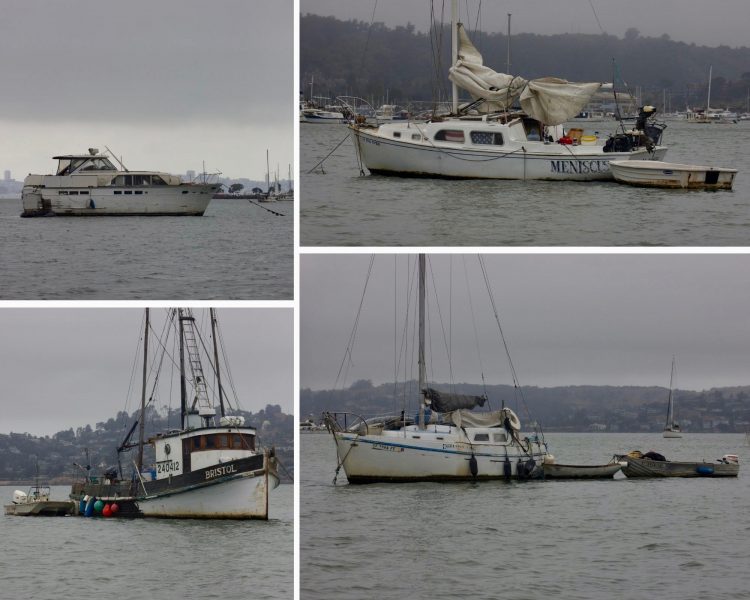
The agreement between the RBRA and BCDC says that the RBRA must establish a mooring field, the location of which has yet to be determined, by December this year. “This binding agreement puts some legal structure around illegal anchor-outs,” Steve McGrath told us. Current anchor-outs enrolled in the RBRA’s “safe and seaworthy” requirements would be moved to this field, and would be allowed to reside there through October 2026; it’s not clear if the mooring field will be available for transient boats after that time. “No discussion has occurred or decision made regarding whether or not to seek permits for moorings beyond 2026,” McGrath told us.
A 100-boat mooring field for Richardson Bay was proposed in 2013, and has long been promoted by Latitude 38 — we’ve often looked to San Diego as a successful model. Former harbormaster Bill Price told us that the idea a decade ago offered compromises among stakeholders, and would have held anchor-outs to a higher standard. Price said that the BCDC had “some interest” in the proposal at the time, but that it was never well received by Sausalito.
“I was pretty vocal about opposing the mooring field in the BCDC/RBRA agreement,” Jill Hoffman told us last year, adding that the recent proposal for the field was reached with no input or collaboration from the City of Sausalito, and that its first proposed location was “in rough waters” at the north end of the city.
“And at the end of the five-year period what do you do?” Hoffman asked, referring to the October 26 deadline. “I haven’t seen a plan from the county to rehouse these people, and that was the genesis of this homeless encampment.” Hoffman wrote an op-ed in the Marin Independent Journal in August 2021 saying, “The last time RBRA inserted ‘temporary’ moorings, they overstayed their permits by 16 years and were rented for residential and storage use.” Hoffman wrote that Sausalito’s tent encampment sprang up in late 2020 “when a vessel was destroyed and the person who was living aboard had nowhere else to go.” Several people told us they reject this narrative, and that the original camp was not comprised of anchor-outs.
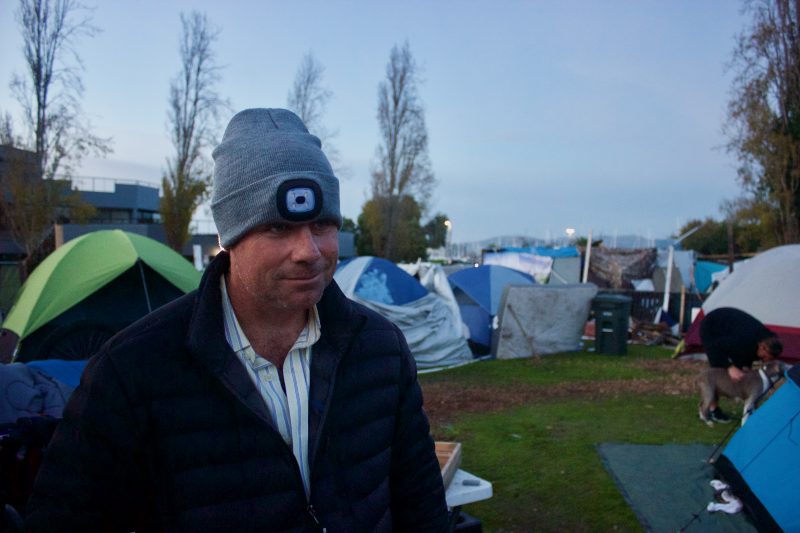
The homeless encampment in Sausalito, adjacent to the Army Corps of Engineers Bay Model Center, has around 40 to 50 residents, according to estimates. (The city-sanctioned camp was originally in Dunphy Park, near Galilee Harbor, but was relocated to Marinship Park.) Some residents told us that they believed there were up to 20 former anchor-outs in the camp. “They want us to wallow in this,” one camper told us. “And if they break us up, they win.” One person told us that they believed the camp was “concocted by activists” to make an argument for housing, and not necessarily reflective of people who had lived on boats.
Both Curtis Havel and the RBRA told us that no occupied boats were confiscated, and that no one became homeless as a result of removing boats from Richardson Bay. (We’ll have more on this in the next installment.)
For months, tensions have been high among city workers, the police and camp residents. Last year, a Sausalito city employee was accused of throwing a rock at a homeless woman in the camp. The city of Sausalito has been accused of “failing to protect and causing harm to” the residents of the encampment, according to the Pacific Sun. “A lawsuit filed in February has cost Sausalito approximately $500,000 so far,” the Sun reported. In December 2021, a photojournalist was arrested and his equipment confiscated after police accused him of interfering with a police investigation and injuring an officer.
When we visited the camp in November 2021, residents told us that raw sewage had contaminated the grass. The city told campers to move onto tennis courts by February 9; that same day, there was an explosion and fire near the camp, and Sausalito declared a state of emergency, according to the Marin IJ.
The language used by some anchor-outs makes us worried a peaceful resolution remains elusive. Brian Dorris, the anchor-out of five years, told The Guardian, “‘This is my home,’ he [said], adding if they want to take his boat, they should ‘bring a body bag.'” Another anchor-out told the LA Times that the only way he was leaving his home was “in handcuffs or a black plastic bag.”
Please click here for Part 2 of this series, and here for Part 3.
This story has been updated.


